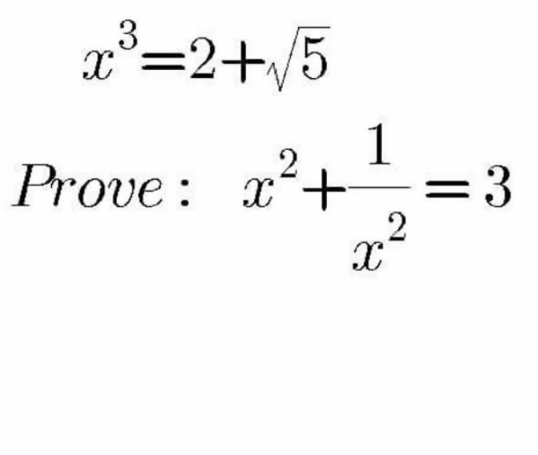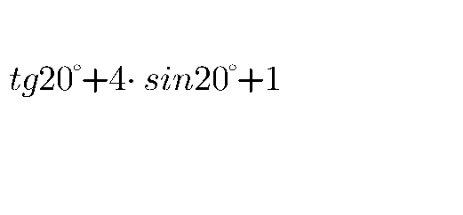
AlgebraQuestion and Answers: Page 251
Question Number 109895 Answers: 1 Comments: 3

Question Number 109754 Answers: 1 Comments: 0
Question Number 109721 Answers: 1 Comments: 0

Question Number 109699 Answers: 1 Comments: 0
Question Number 109626 Answers: 1 Comments: 1

Question Number 109625 Answers: 0 Comments: 2
Question Number 109611 Answers: 4 Comments: 1

Question Number 109595 Answers: 1 Comments: 1
Question Number 109577 Answers: 4 Comments: 1
Question Number 109569 Answers: 1 Comments: 0

Question Number 109544 Answers: 2 Comments: 1
Question Number 109516 Answers: 3 Comments: 0
$$\mathrm{cos}\:\left(\mathrm{1}−{i}\right)={a}+{ib} \\ $$$${Find}\:\:{a},\:{b}. \\ $$
Question Number 109500 Answers: 3 Comments: 0
Question Number 109495 Answers: 4 Comments: 0
Question Number 109464 Answers: 0 Comments: 0
$$\sqrt{\mathrm{1}+\sqrt{\mathrm{2}+\sqrt{\mathrm{3}+\sqrt{\mathrm{4}+...}}}} \\ $$
Question Number 109460 Answers: 1 Comments: 0

Question Number 109414 Answers: 2 Comments: 0

Question Number 109377 Answers: 1 Comments: 0

Question Number 109369 Answers: 2 Comments: 0

Question Number 109307 Answers: 1 Comments: 0

Question Number 109222 Answers: 1 Comments: 0
Question Number 109193 Answers: 3 Comments: 8
$${solve}\: \\ $$$${x}^{{x}^{\mathrm{3}} } =\mathrm{5} \\ $$
Question Number 109160 Answers: 4 Comments: 0
Question Number 109147 Answers: 3 Comments: 0
Question Number 109237 Answers: 4 Comments: 0
Question Number 109090 Answers: 1 Comments: 0
Pg 246 Pg 247 Pg 248 Pg 249 Pg 250 Pg 251 Pg 252 Pg 253 Pg 254 Pg 255
